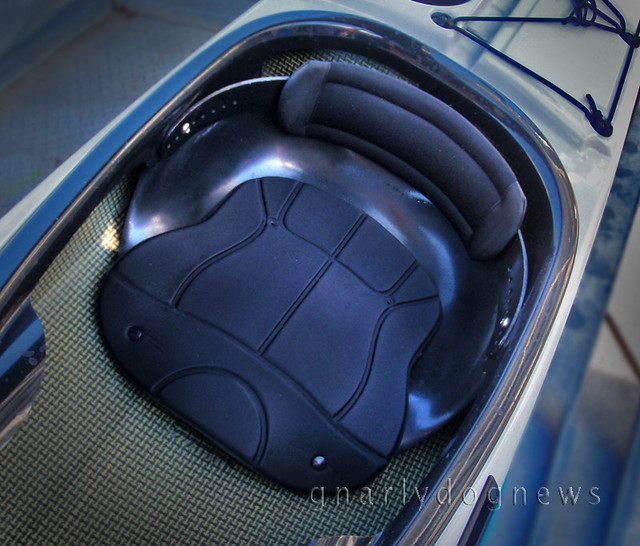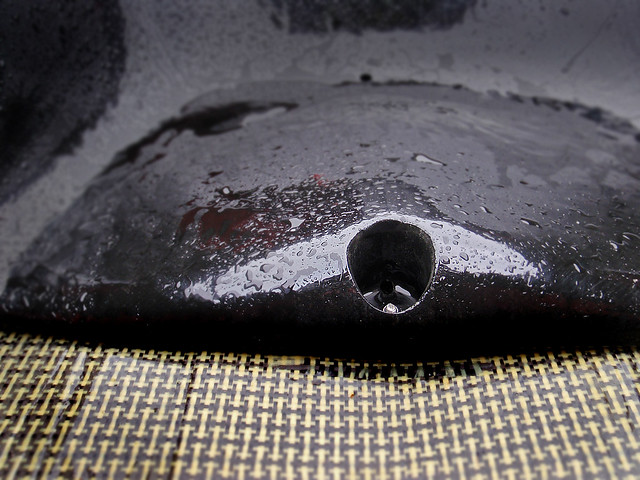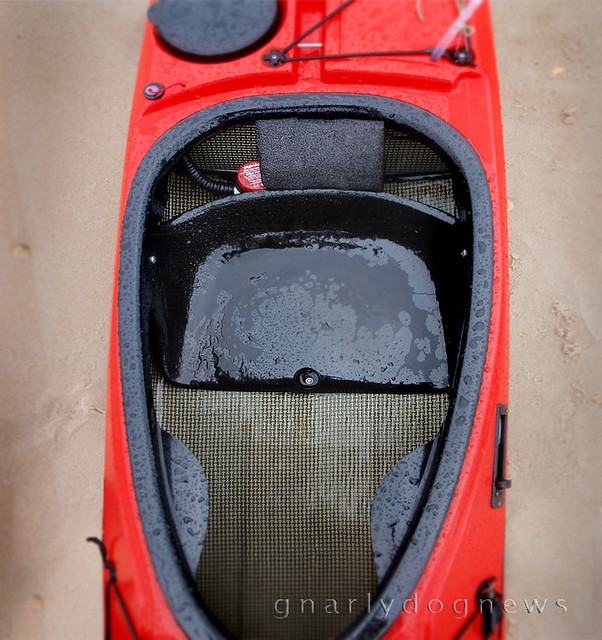Incidentally I am not the only one with such problem.
Some manufacturers hang their seat from the cockpit coaming or the deck of the kayak.
This method allows for easy install and adjustment for fore and aft location with minimal modifications.
Valley sea kayaks have addressed the problem with a seat made of plastic that is much more resilient than chopped strand fiberglass.
I repaired my cracked seats by removing them and adding several layers of quality fiberglass cloth and Kevlar in critical areas around the cheek plates. While not really difficult, it's annoying that seats are not structurally more sound.
I believe that the cracking problem is caused by the seat being able to swing side to side.
While foam packing under the seat does little to prevent them swinging, regular rolling and edging of the kayak induces the swinging. In reality all that is needed is to anchor the pan and prevent it from swinging.
A cheap retrofit solution to the problem is to use some sort of goop (I prefer the polyurethane type) to bond a small area of the seat to the hull. In the event of seat removal one needs to cut only the small section of goop with a kicthen knife.
However Tahe Marine kayaks has addressed this fundamental problem and prevented seats cracking.
Tahe Marine has anchored the seat with a factory stud set into the bottom of the hull and bolted the front of the seat securely. Tahe's seats don't swing and I assume don't brake (have not experienced or heard of it yet).

seat in Zegul_the center bolt is covered by foam pad
Tahe's method however complicates things if one finds the need to relocate the seat.
I found that on couple of my kayaks the seat was too close to the rear coaming. In my SeaBird North Sea the seat was really close to the back preventing any chance of laybacks.
The kayak also leecocked substantially and since the cockpit is very long I was able to push the seat forward and adjust the trim. SeaBird Designs seat allows fore and aft adjustment.
In my Zegul 520 the seat was again very close to the rear of the cockpit. Despite a low rear deck I could not perform easy laybacks and my back would hit the coaming. The seat was also close enough to prevent the install of an electric bilge pump behind the seat.

no room for electric pump behind the seat
Unfortunately the seat is designed to sit in one location only. Moving it forward required modification to the seat.
I cut the seat's cheek plates and modified the front of the seat to align it with the floor stud but I still didn't like that version.
Since my butt is rather large (size 38 pants) I wanted something that would support my legs as well as and prevent the dead legs syndrome: the factory seat had to go.
I fabricated a new fiberglass seat taking the mould of my Impex kayaks. Those seats have proven to be of the perfect shape (even on long distance paddles) for myself and friends of mine.
I laid up a seat using tightly woven fiberglass cloth and epoxy, with Kevlar on the perimeter to prevent possible stress cracks. In the process of using less resin and stronger woven cloth (compared to chop strand)I saved a bit of weight. I had to create a little "well" where the stud is located so I could securely fasten the new seat to the hull.

front of new seat_depression for fastener
I also eliminated the backband to further enhance the kayak's comfort. I no longer catch myself on it when rolling or reentering the kayak.
I now have enough room to install an electric bilge pump too.

new seat with electric bilge pump behind it
Next article will be on customizing, not replacing a seat in a Tahe Greenland. Coming soon...

thank you for the information
ReplyDeleteyou are a talented guy that is for sure
Nice article - would be good see some pics of the layup process. Interested in your next article. Although I find my Greenland T seat fine (and I have a similar sized butt) I am always keen to look at others customisations and improvements.
ReplyDeleteHeres my take on installing a pump into a tight cockpit - i.e Greenland T.
http://hunterpaddler.ning.com/forum/topics/installing-an-electric-pump
Not the only solution, but it works well for me. It does require to have the intake line fully charged before pumping but will clear the cockpit quite low once its pumping.
Talk about complicated! You could try ripping it all out and putting in a customized foam seat on the cockpit floor, sitting on two strips of 50mm velcro. Easily adjustable, replaceable and removeable for cleaning and repairs.
ReplyDeleteIt beats me why manufacturers persist with molded 'glass seats
Stuntman, very nice article on a variation to the standard Rule 500. Low profile and no need to relocate that seat. Very nice pictorial explanation. Thank you for your contribution.
ReplyDeleteDavid, I gave the foam seat a go. Very comfortable but I had a few issues:
ReplyDelete1)There were no cheek plates for side support in my foam seat 2) I had the seat getting ripped out when wet exiting in surf (Velcro just was not holding in well enough) 3) Could not get enough flow to my bilge pump behind the seat even if I created a channel under the seat (a composite seat offers a lot of surface that is not blocked by the seat).
Eventually I went back to composite seats.
... and I just found this:
ReplyDeletehttp://justyakkin2.blogspot.com/2011/04/reduce-reuse-recycle.html
Much simpler than my version. Hopefully as effective
Gnarlydog did you try the simpler version to comment about it?
ReplyDeleteStelios, I have not tried the "simpler" version since my kayaks are rather narrow and I don't think the plastic chair/seat would fit. Making a composite seat is effort well warranted to get the perfect feel and strength.
Delete